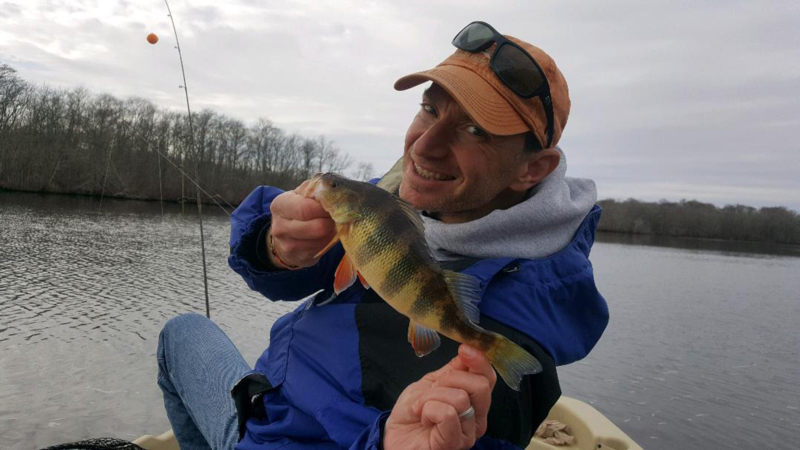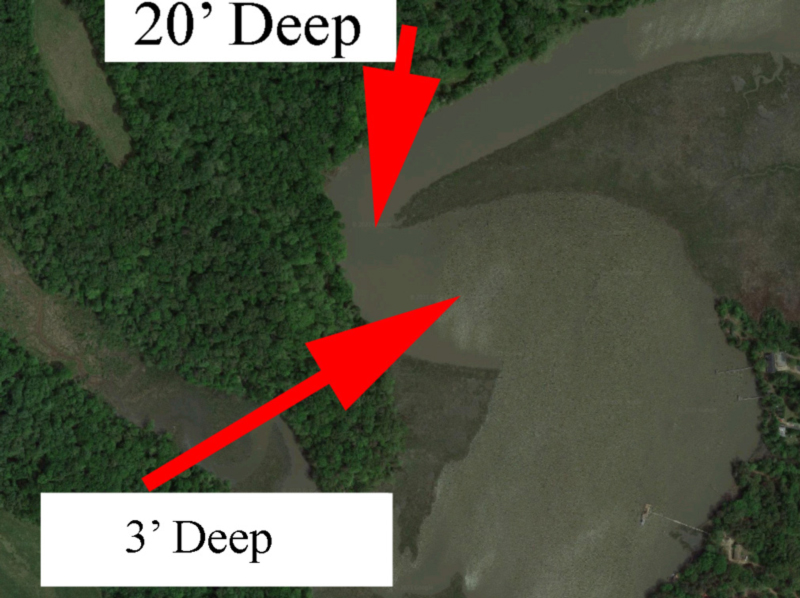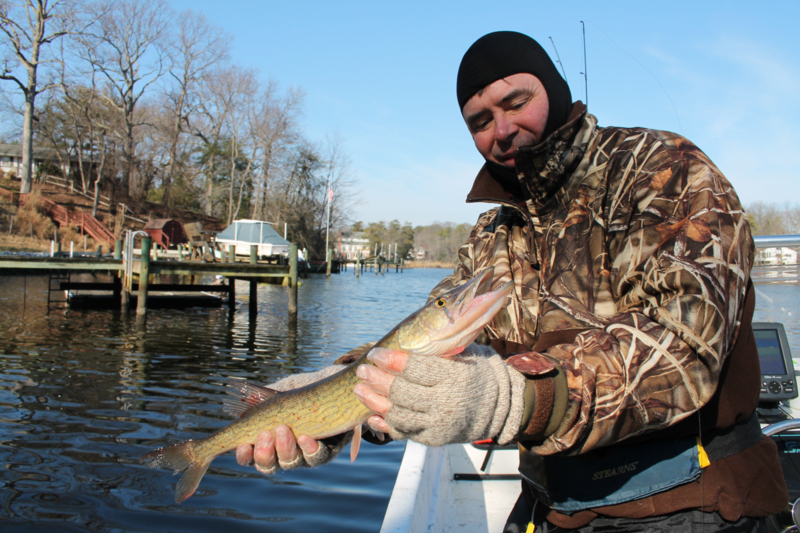To Chesapeake Bay fishing sharpies and non-fishers alike, the names are unmistakably Native American in nature: Pocomoke, Wicomico, Rappahannock, and of course, Susquehanna. These Chesapeake tribs and many others are named after the tribes that lived along their shores long before Europeans ever discovered America. And you can bet your bottom dollar that those indigenous inhabitants fed themselves all winter long by fishing the rivers. Most of the Bay’s tribs offer good fishing at one time of the year or another, but it’s when the main-stem’s waters grow cold that these rivers really shine. Brackish and freshwater species mix with one another, ball up in channels and holes, and afford us an opportunity to break the cabin fever and bend our rods during the dead of winter. The list of potential targets is long: Largemouth bass, catfish, crappie, pickerel, and perch are the mainstays, but species like fallfish, gar, and the oddball rockfish will pop up here and there as well. The question is, how will you catch them?


Chesapeake Tributary Fishing Tactics
Truth be told, you can apply just about any method of angling from trolling to fly fishing and catch fish in the tribs during the winter months. But if you want the very best chance of catching fish, you’ll fall back on the classic: live bull minnow.
Bull minnow are natural wintertime prey in the tributaries. They provide an enticing wiggle that sets the predators off. And — this factor is absolutely key — they can be fished very slowly and still look real, because they are real. Most lures require some level of motion and speed in order to swim realistically or get their tails pumping, and in the dead of winter most fish don’t feel like turning on the afterburners to chase down a morsal. You need to slow down your presentation significantly, and a minnow allows you to do so without paying any price in the realism department.
Just how will you fish that minnow? That all depends on the species of the fish you’re after and how deep they’ll be found. When they’re in seven or fewer feet of water or are shadowing a channel edge dropping down from this depth or thereabouts, the good ‘ol bobber will do the trick. If fish are deeper and you’re fishing static from the bank or from an anchored boat or kayak, a top-and-bottom rig works well. But note that this rig snags often when you’re drift fishing or if it gets pushed along in a current. In that scenario, tying on a shad dart, marabou jig, Road Runner, or similar style lure, and tipping the hook with the minnow, is a good move. Choosing lures like these also allows you to do more search-and-destroy style fishing, probing different spots and depths from cast to cast, which makes it an excellent choice when you’re fishing unfamiliar bodies of water for the first time and need to keep moving until you discover the hotspots.
Some anglers will eschew fishing with live bait, and other folks may have difficulties finding it readily available. In either case, if you’re going to go artificials-only alter your offerings to choose lures that look alive with minimal speed through the water. When it comes to plastics, twister-tails generally trump straight tails and most paddles (though some very flexible makes do give a nice wiggle even at slow speed); spinners need to be chosen or eliminated depending on how easily they do or do not spin; and swimming plugs should be culled in a search for those that wobble along at a crawl.
Finding the Best Fishing Spot

We are immensely lucky when it comes to fishing tributary rivers in the DelMarVa region. No matter where you live, there are certain to be multiple options within a reasonable drive and there are probably some more or less within a stone’s throw of where you live. But all tribs are not created equally. Some, like the James, have strong currents from both the freshwater flow and the tides. Others, like the South, have almost no freshwater flow and little tidal current. Each trib is different and each has to be approached differently — in fact, each section of each tributary is usually distinct from other sections of the very same river. So, how will you know where to look for the fish?
- Low or No Flow – Search for structure that reaches out into reasonably deep water. Most areas with little or no flow also will have nondescript channels and slow drop-offs. So, you need to find things like piers, trees, or bridge pilings that intersect with relatively deep areas. An example: in the upper Magothy, piers and boathouses are often gathering places for perch and pickerel.
- Strong Freshwater Flow – If you’re far enough upriver in some tribs, you’ll watch the surface current go downstream even as the water level rises on an incoming tide. Areas like this are often topnotch for species like bass and crappie, and you’ll usually find them hiding around deadfall. Look for trees that stick out into the channel and interrupt the current, and fish painfully close to the branches. However, stay on the move until you find the fish. Often there will be dozens of sweet-looking trees lying out from the shore but for whatever reason only one or two of them will hold fish. An example: The upper Tuckahoe. Fishing here you can hit 20 trees laying along its banks and catch nada, then find the right tree and catch 20 fish in 20 minutes.
- Strong Tidal Flow – A trait of rivers that get a lot of tidal play are scours. Eons of water rushing back and forth eats out deep holes, and that’s often where you’ll find species like perch and catfish packed in fin to fin. A depth finder is obviously helpful for IDing such locations, but as a rule of thumb look to find them on the outside of very sharp bends. Nanjemoy Creek off the Potomac (shown above) illustrates the point well; you can be in three feet of water one moment and 20 feet the next when probing one of its bends.
- Strong Upstream and Tidal Flow – As you might guess, this is an “all of the above” situation. The Pocomoke above Snow Hill is a great example. On high tides you’ll find pickerel and bass on piers, pilings, and deadfall along the shorelines, and on low tides you’ll find all the species we’ve mentioned cramming into scours and along the channel edges.

Okay: What are you waiting for? Christmas is coming and it may be on the chilly side out there, but fish are in those tributaries and they’re just waiting for you to come and get ‘em. So suit up, fill the thermos with hot coffee, and fill up that minnow bucket. You won’t regret it.
For more information on winter fishing in tributaries including some specific where-to intel, check out Winter Fishing in Five Hot Winter Tidal Tributaries.